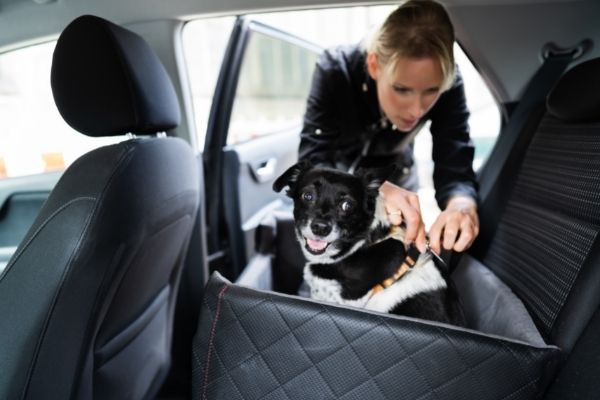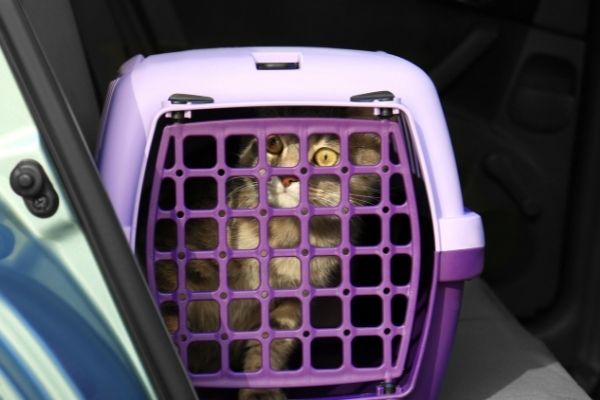 A road trip with your pet can be fun for you and your furry friend. But one of the most common injuries to pets is due to accidents inside cars.
A road trip with your pet can be fun for you and your furry friend. But one of the most common injuries to pets is due to accidents inside cars.
Unrestrained pets in a car are unsafe.
“You wouldn’t put your child in the car unrestrained, so you shouldn’t put your pet in the car unrestrained either.”
~Col. Frank Rizzo, superintendent of the New Jersey Society for the Prevention of Cruelty to Animals
Here are 3 things to say “no” to before traveling in a vehicle with your pet:
1. Just say “no” to free-range pets
Allowing your pet to roam freely in a moving vehicle is a recipe for disaster. Cats love to crawl under the driver’s feet, which can interfere with accelerating and braking (plus, the cat can get squished).
And dogs tend to get overly excited, jetting from one side of the car to the other and distracting the driver.
The safest place in a car for a pet is in the backseat, like a child, restrained in a tethered pet carrier or vehicle restraint harness.

Even crates can go through windows during an accident, so tie the crate down, either with the seat belt guides that are fitted into the travel carrier, or on the floor of the back seat, with bungee cords or ropes.
2. Just say “no” to passenger seat pets
Even if your dog is big enough for the front passenger side seatbelt to fit over him, seatbelts and airbags are designed for adult-sized humans.
And even if your pet is in a carrier or harness in the front seat, it can be crushed by the driver’s body or the inflation of the airbag. In a collision, an unrestrained pet anywhere in the vehicle can become a projectile missile, seriously injuring itself and other passengers.
3. Just say “no” to distracted dogging
Holding your pet in your lap while you drive, while legal in many states, can be extremely dangerous for the driver, passengers, other motorists, and your pet.
Consider this: If you’re driving 30MPH and get in an accident, your 10-pound dog or cat can turn into 300 pounds of force.
In Washington state, our distracted driving law prohibits tasks not associated with operating a vehicle. Holding your pet on your lap might be considered a distraction. If you pet interferes with you handling your vehicle or you’re pulled over for erratic driving or leaving the lane of travel, you could be subject to a negligent driving ticket.
Smart drivers don’t drive with a human infant in their lap or a cell phone in their hand. Neither should we drive with an unrestrained pet.
Carsickness and pets
Another thing to be aware of when traveling with your pet is that some animals experience car sickness. Pet parents sometimes assume their pet just doesn’t like traveling in a vehicle, when, in reality, they are carsick.
Symptoms to watch for include:
- Excessive panting
- Drooling
- Vomiting
- Bowel movement while in the vehicle
- Crying nonstop (cats, in particular, may vocalize or cry during the entire trip when they’re carsick).
We have a medication on hand that works well for pet car sickness. Ask us about it if your pet exhibits symptoms while traveling.


